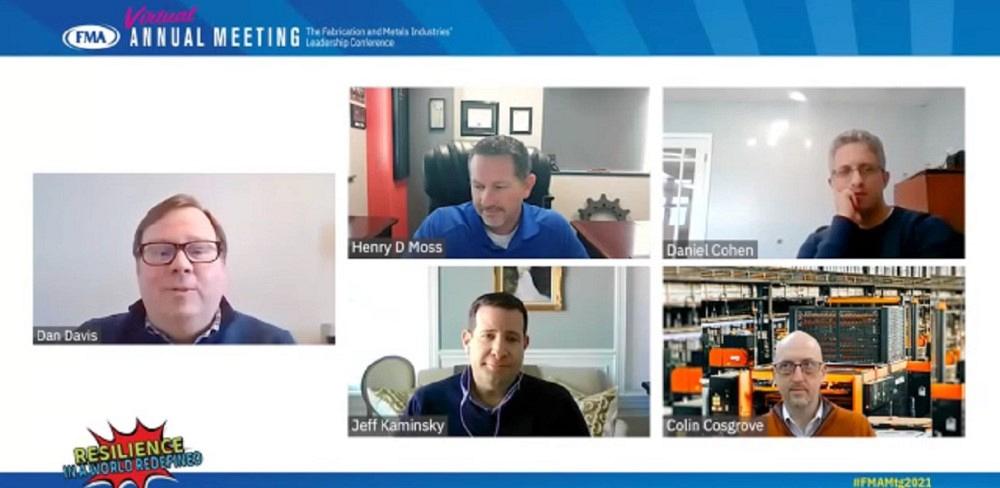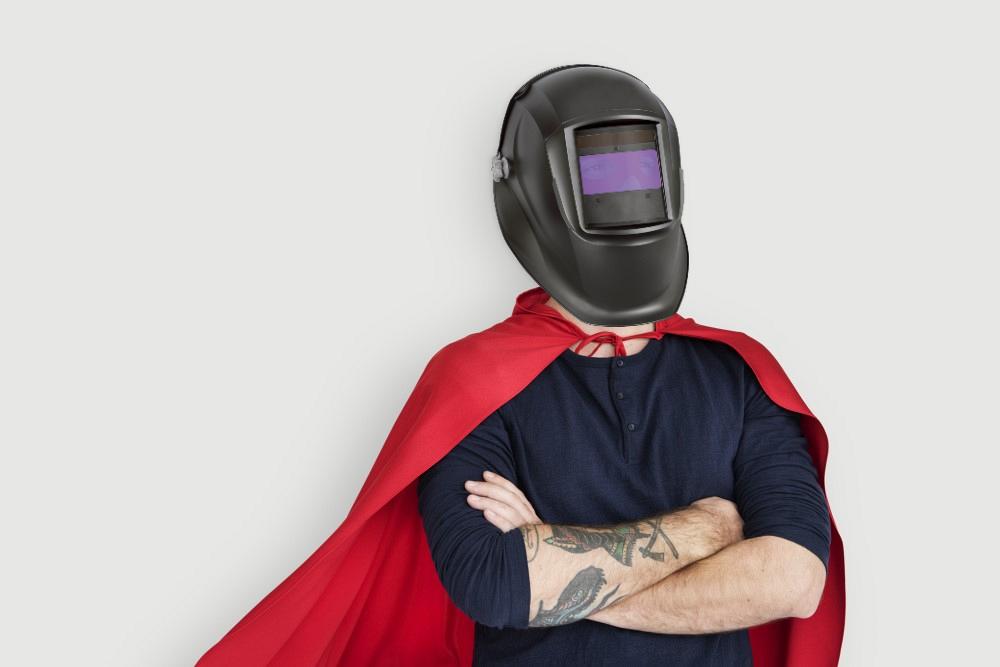- FMA
- The Fabricator
- FABTECH
- Canadian Metalworking
Categories
- Additive Manufacturing
- Aluminum Welding
- Arc Welding
- Assembly and Joining
- Automation and Robotics
- Bending and Forming
- Consumables
- Cutting and Weld Prep
- Electric Vehicles
- En Español
- Finishing
- Hydroforming
- Laser Cutting
- Laser Welding
- Machining
- Manufacturing Software
- Materials Handling
- Metals/Materials
- Oxyfuel Cutting
- Plasma Cutting
- Power Tools
- Punching and Other Holemaking
- Roll Forming
- Safety
- Sawing
- Shearing
- Shop Management
- Testing and Measuring
- Tube and Pipe Fabrication
- Tube and Pipe Production
- Waterjet Cutting
Industry Directory
Webcasts
Podcasts
FAB 40
Advertise
Subscribe
Account Login
Search
FMA Annual Meeting Recap: Fabricating heroes prepare for better times ahead
The industry gathers intelligence and improvement tips at the 2021 FMA virtual Annual Meeting
- By The Fabricator editors
- March 15, 2021
Editor's Note: This is the first part of our FMA Annual Meeting Recap blog series. Read Part 2, Part 3, Part 4, Part 5, and Part 6.
What did you do on your one-year anniversary of pandemic living? The Fabricators & Manufacturers Association hosted 400 members and other industry participants at its virtual Annual Meeting March 3-4 and celebrated the metal fabricating “superheroes” who did their best to keep employees safe and customers satisfied during one of the most challenging years they likely will have to endure.
After all, it was only two years before that the metal fabricating community gathered for the 2020 FMA Annual Meeting in San Antonio. The event was dominated by discussion of “disruptive technologies,” but little did the world know that the true disruption would come in the form of an airborne virus with the potential to kill.
That’s not totally truthful, however, because some metal fabricators already knew even as others went to industry events like the 2020 meeting or just went about their business. Speaking during a panel called “Stories of Manufacturing Superpowers” on the first day of the virtual Annual Meeting, Colin Cosgrove, president, Laystrom Manufacturing, Chicago, and Henry Moss, president, Metalfx, Willits, Calif., shared stories of how they were gearing up for possible changes related to the virus in the early part of 2020.
Cosgrove said that Laystrom had a customer with connections to the Wuhan province in China where the pandemic started, and as a result of hearing about some of these unfiltered reports, they started talking about what later would be called COVID-19 in February. It gave them a head start to develop some plans and start communicating with the company’s employees.
Stress levels went up. Extra precautions were taken. Cosgrove said they experienced only one COVID-19 case during the first six months of the pandemic. Things got trickier when the second wave of COVID-19 cases spiked in the fall and a handful of other workers were diagnosed with the virus, but Cosgrove said Laystrom was able to push forward. Everyone was used to the new safety procedures and did what was necessary to ensure that customer deliveries were still meeting deadlines.
“Without question, though, it was the most challenging year in my 26 years of manufacturing,” Cosgrove said.
Moss agreed. “There was totally no aspect of our business that didn’t have to shift,” he said of Metalfx, which employs about 200 people at its Northern California shop.
Metalfx got word of the virus from some of its Asian customers. Because of that, they knew they had to be ready.
“We knew we had to figure out how we were going to stay open. Closing wasn’t an option,” he said.

The FABRICATOR Editor-in-Chief Dan Davis hosted "COVID-19 Pivots Panel: Stories of Manufacturing Superpowers" with Colin Cosgrove of Laystrom Manufacturing Company, Jeff Kaminsky and Daniel Cohen of Accurate Metal Fabricating, and Henry Moss of METALfx.
So, when the pandemic panic hit, Metalfx was ready. It had the proper paperwork to share with government officials indicating that the company had customers in the medical and utility industries that needed its parts. Metalfx demonstrated it was an “essential” business and was allowed to continue operation.
Internally, Metalfx enacted new policies quickly to help keep everyone safe. PPE was provided to everyone, and employees’ temperatures were checked upon entering. Moss even shared a colored bracelet with the virtual audience, a visual indication that he had had his temperature checked; anyone not wearing the particular color of the day indicating a temperature check was done is someone that shouldn’t be on the shop floor.
In the keynote address for the virtual event, Joel “Thor” Neeb, a former U.S. Air Force F-15 mission commander and now CEO of business consultancy Afterburner, drove home the point that the ability to see the challenge before you is a huge opportunity for anyone or any business. In dog fighting, that translates into doing whatever you can to see the enemy, even as 9 Gs are pulling down on your neck as you strain to find the opposing plane through the cockpit window. “If you lose sight, you lose the flight,” he said.
subscribe now

The Fabricator is North America's leading magazine for the metal forming and fabricating industry. The magazine delivers the news, technical articles, and case histories that enable fabricators to do their jobs more efficiently. The Fabricator has served the industry since 1970.
start your free subscriptionAbout the Author
- Stay connected from anywhere

Easily access valuable industry resources now with full access to the digital edition of The Fabricator.

Easily access valuable industry resources now with full access to the digital edition of The Welder.

Easily access valuable industry resources now with full access to the digital edition of The Tube and Pipe Journal.
- Podcasting
- Podcast:
- The Fabricator Podcast
- Published:
- 04/16/2024
- Running Time:
- 63:29
In this episode of The Fabricator Podcast, Caleb Chamberlain, co-founder and CEO of OSH Cut, discusses his company’s...
- Trending Articles
Tips for creating sheet metal tubes with perforations

JM Steel triples capacity for solar energy projects at Pennsylvania facility

Are two heads better than one in fiber laser cutting?

Supporting the metal fabricating industry through FMA

Omco Solar opens second Alabama manufacturing facility

- Industry Events
16th Annual Safety Conference
- April 30 - May 1, 2024
- Elgin,
Pipe and Tube Conference
- May 21 - 22, 2024
- Omaha, NE
World-Class Roll Forming Workshop
- June 5 - 6, 2024
- Louisville, KY
Advanced Laser Application Workshop
- June 25 - 27, 2024
- Novi, MI



























